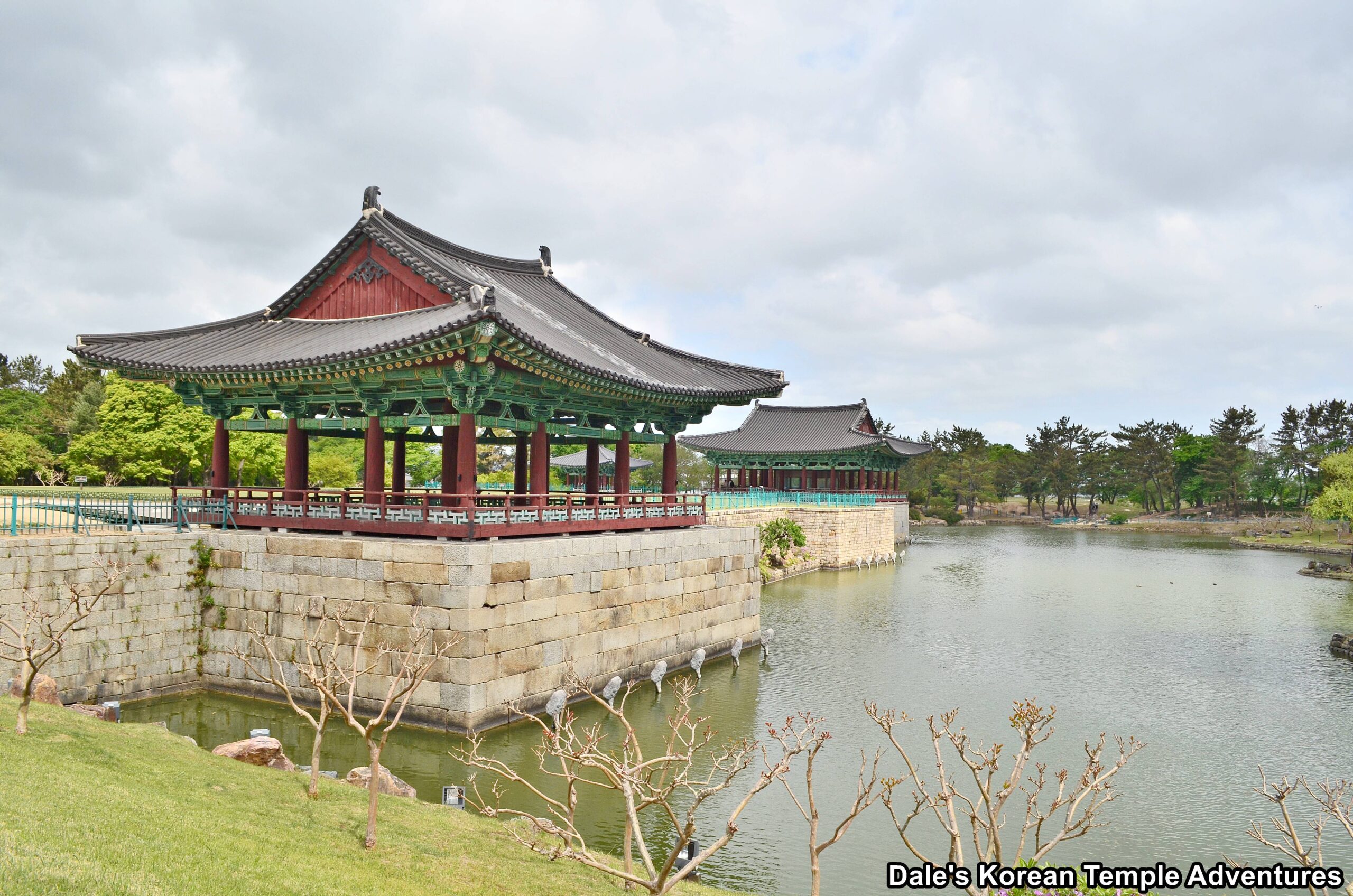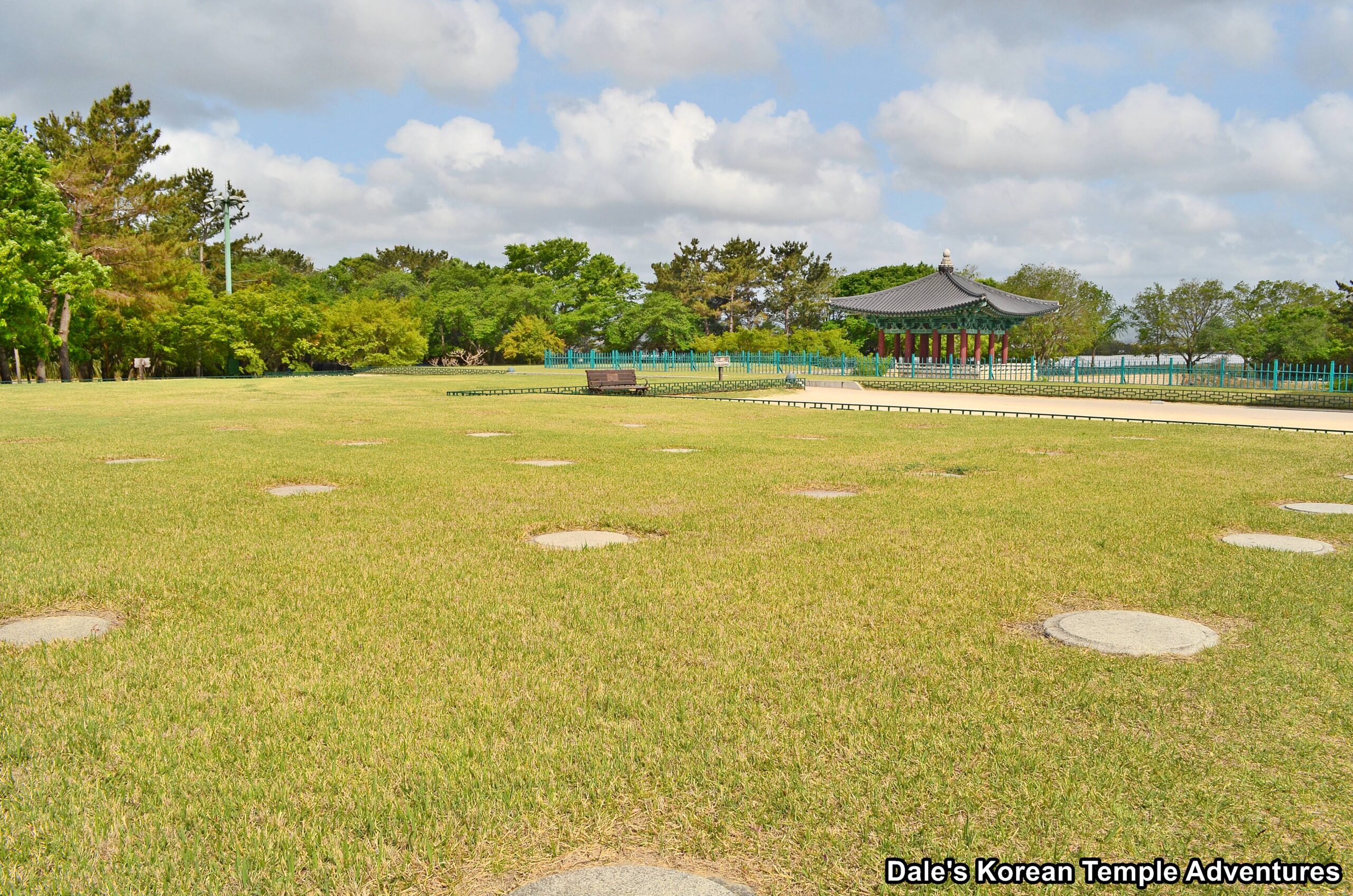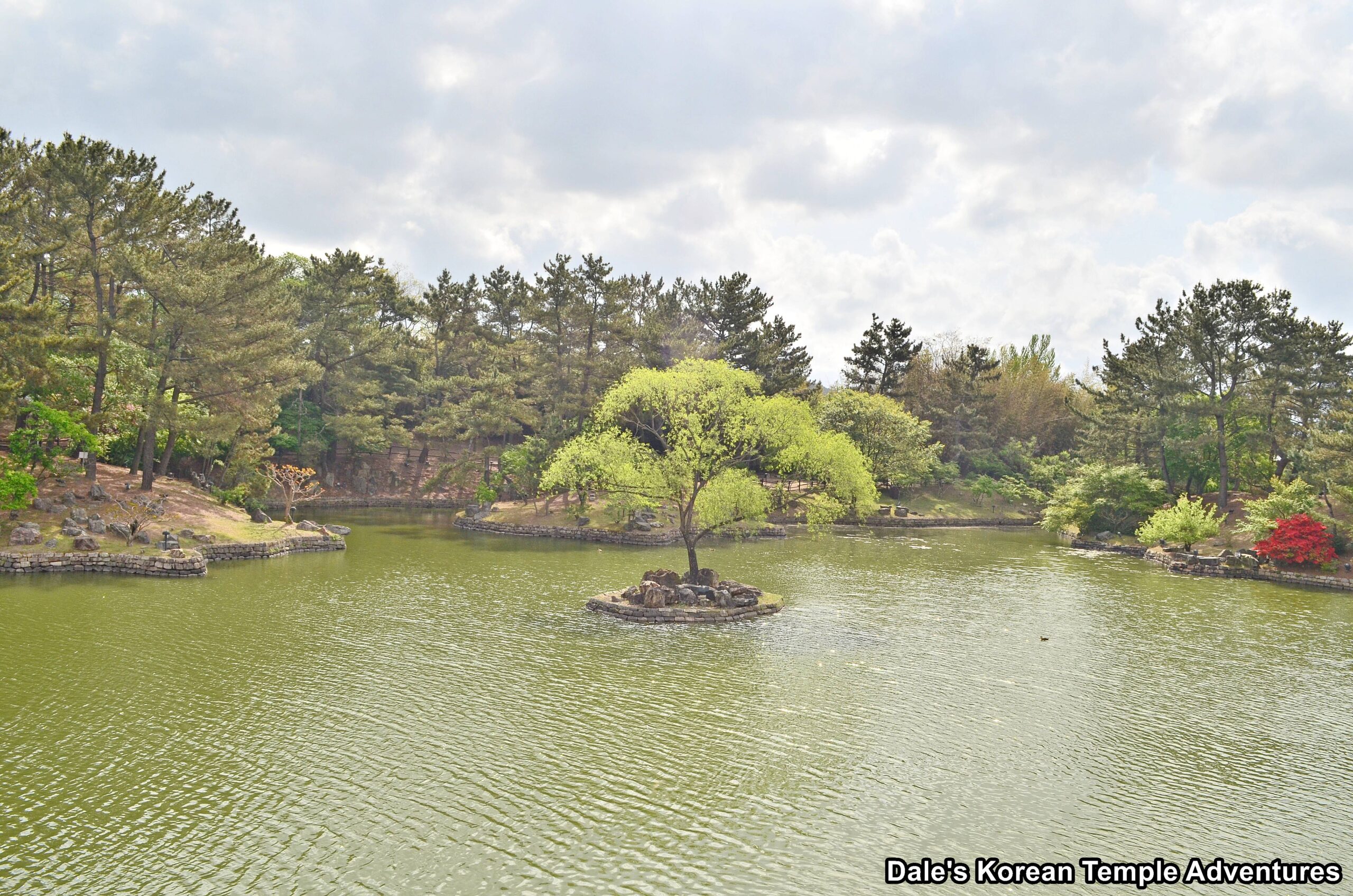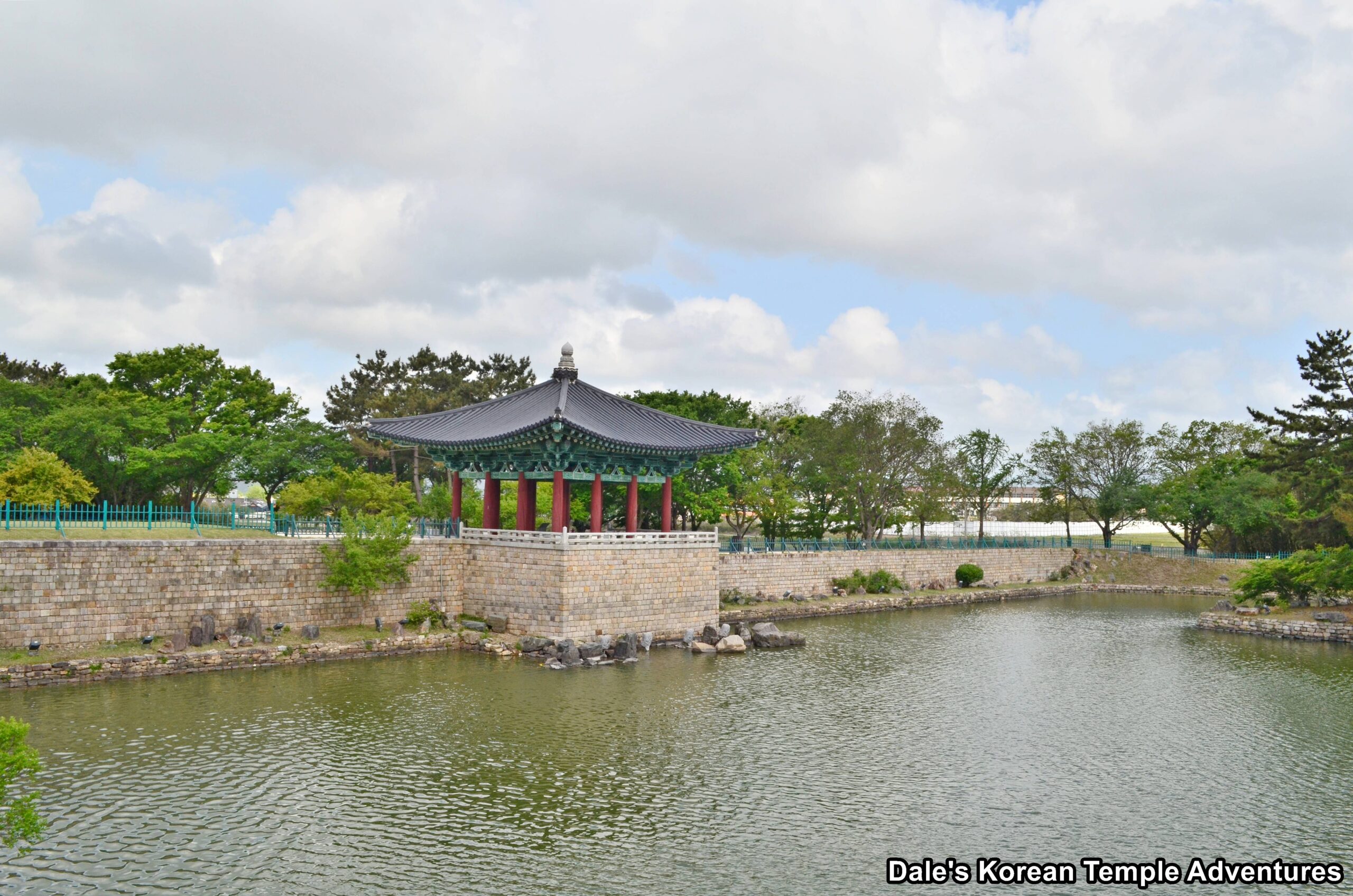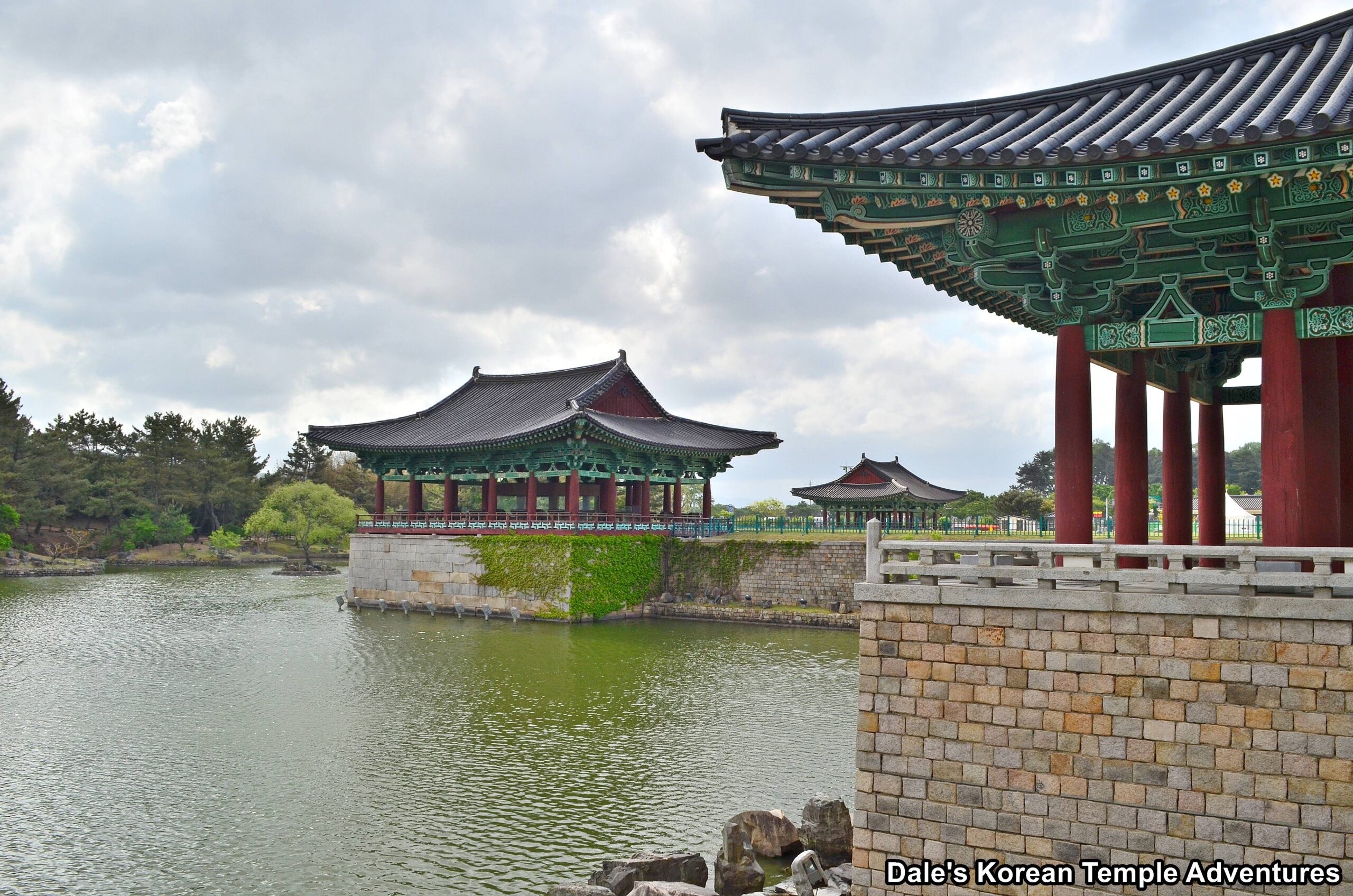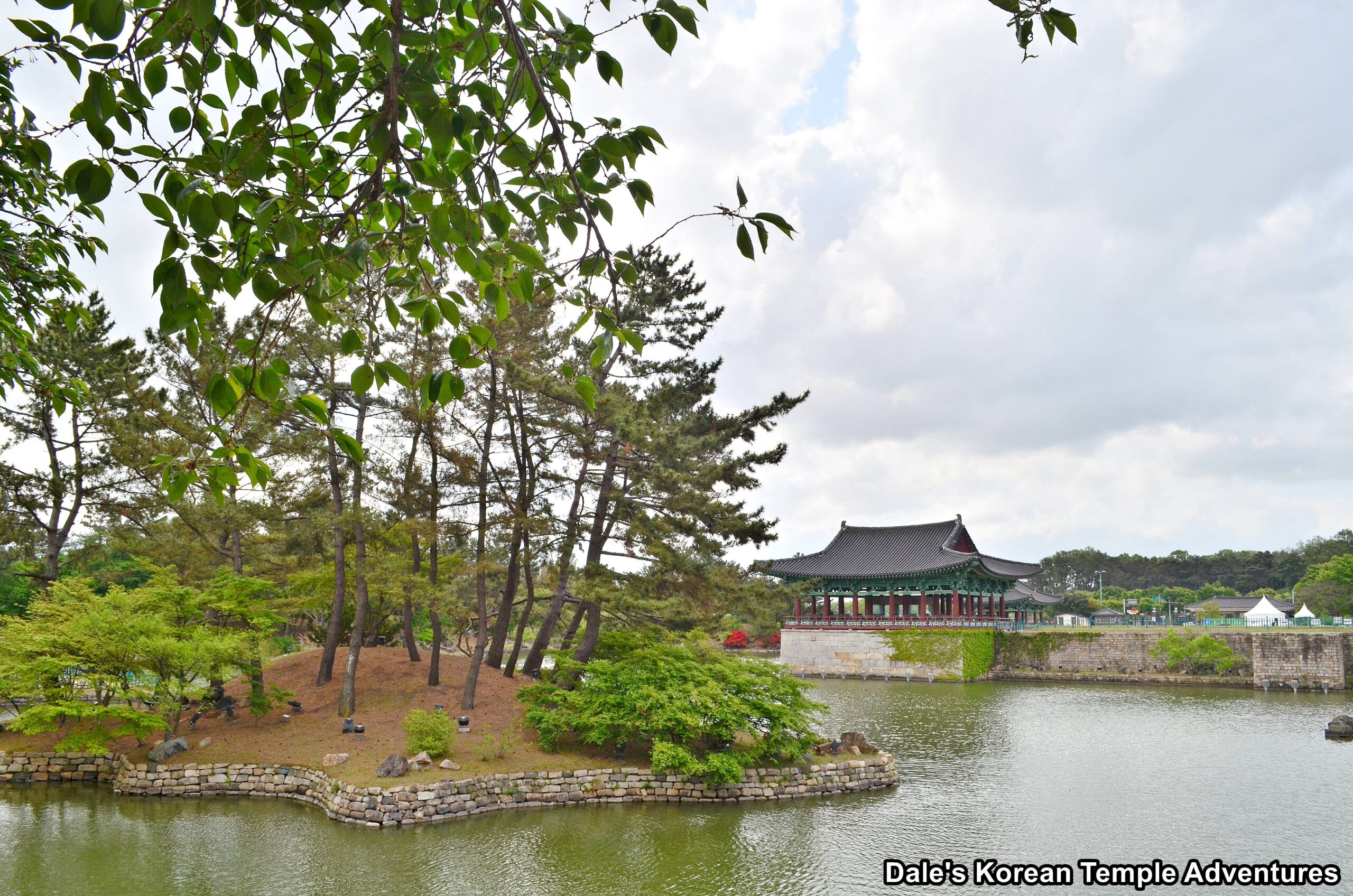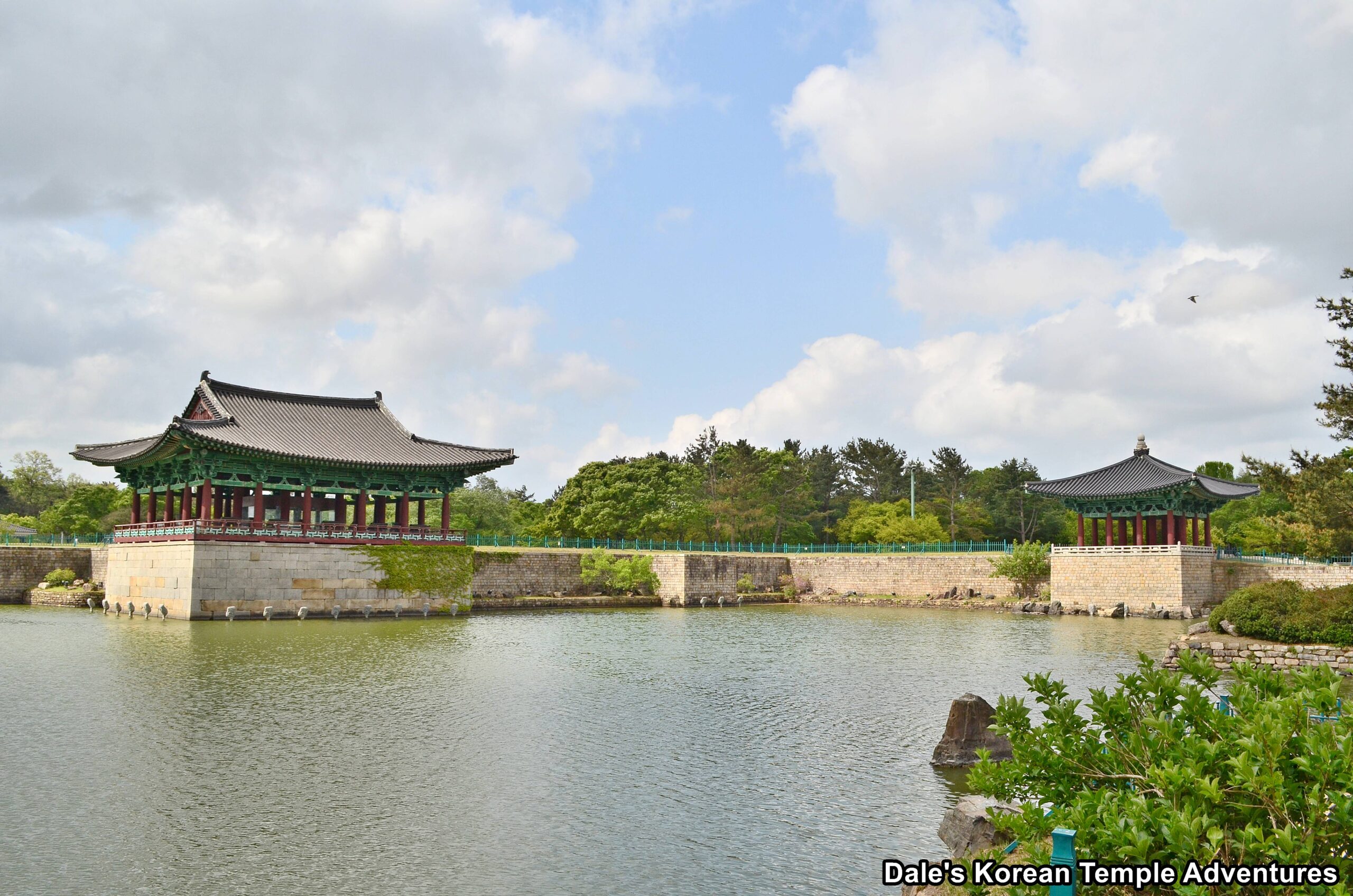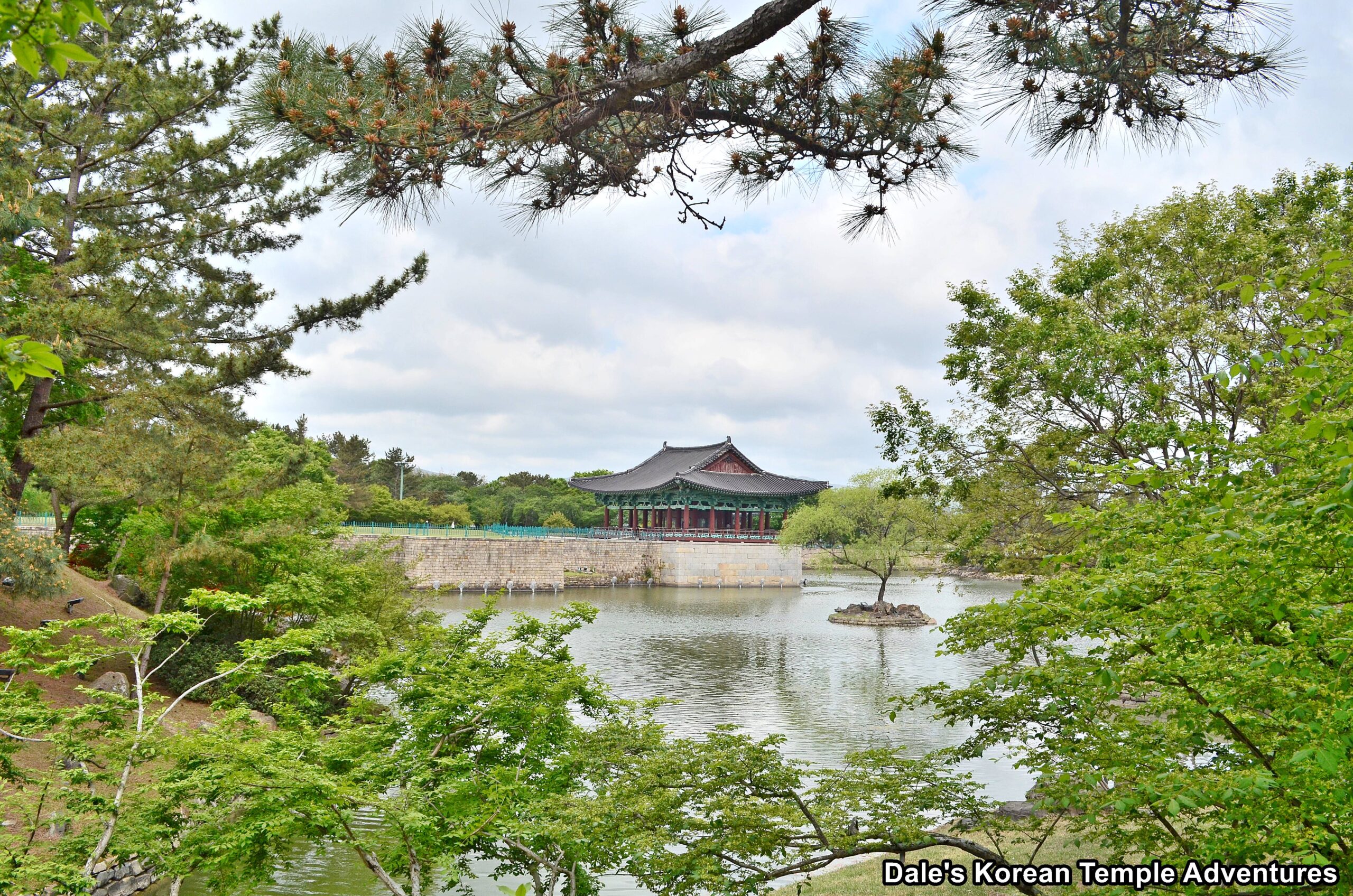Wolji Pond – 월지 (Gyeongju)
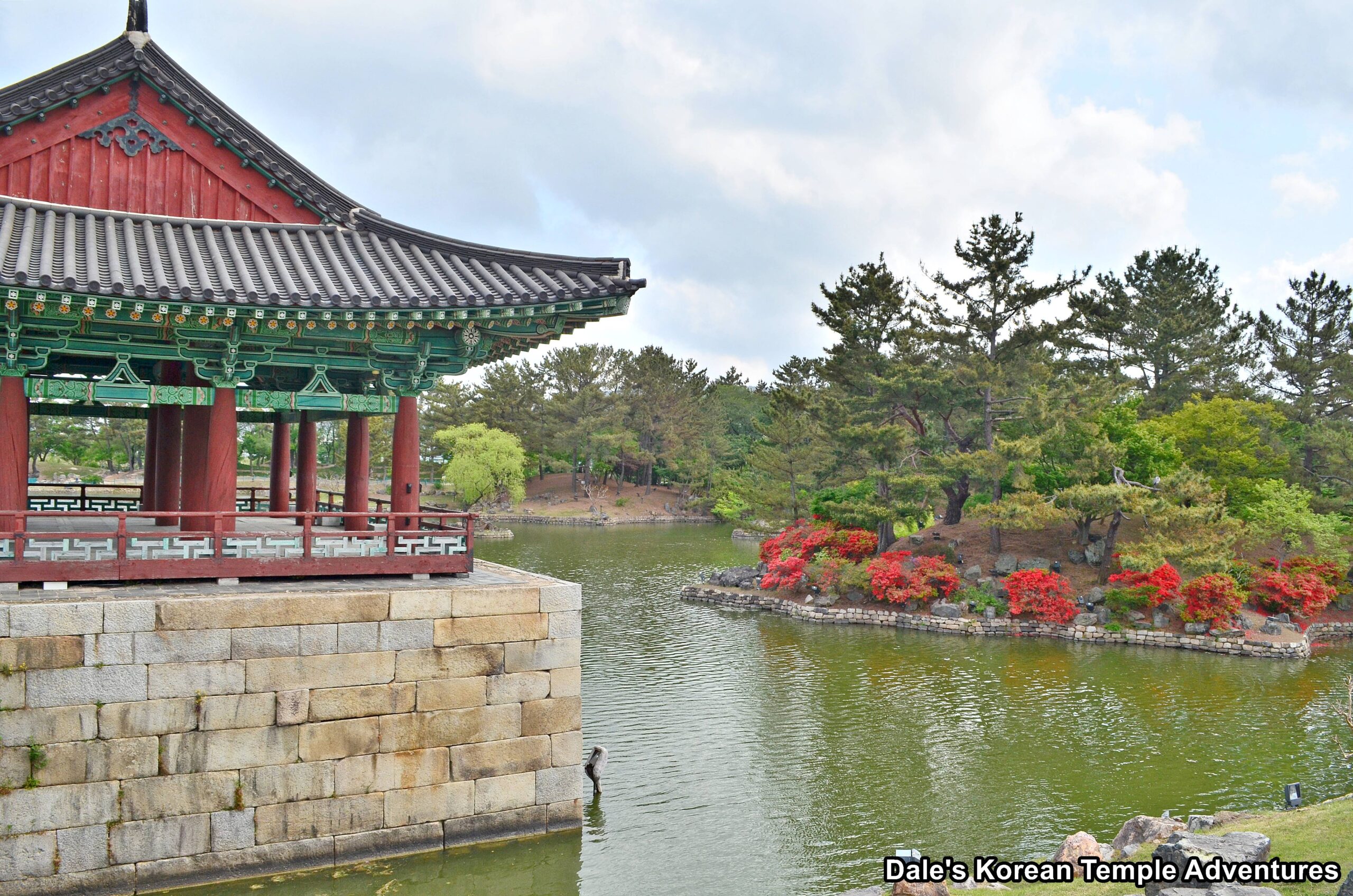
History of Wolji Pond
Since the Joseon Dynasty (1392-1910), Wolji Pond was known as Anapji Pond. The name Anapji is a combination of three Chinese characters: “An – 雁,” which means “goose” in English; “Ap – 鴨,” which means “duck,” and “Ji – 池,” which means “pond” in English. The reason for this name is that after Later Silla collapsed (668-935 A.D.), and Donggung Palace was abandoned, the pond was occupied by wild geese, ducks, and reeds.
During the excavation of Wolji Pond, a lock with the inscription “Donggunga” on it suggested that the pond’s original name was Wolji. The reason for this is that the name “Donggunga” was in reference to a government office in Silla that both managed the Donggung Palace and several other divisions; one of which, was called the Wolji-akjeon. Wolji, it’s believed, was the name of the pond, while “akjeon” refers to the division of government responsible for landscape management. So with the discovery of this lock with the inscription of “Donggunga” on it, it confirmed the belief that Donggung Palace was a palace built during the Silla Dynasty (57 B.C. – 935 A.D.) and that the pond’s original Silla Dynasty name (57 B.C. – 935 A.D.) was Wolji. With this in mind, the Joseon name for the pond, Anapji Pond, was changed back to Wolji Pond in 2011.
Before the collapse of the Silla Dynasty, Gyeongju was its capital, and it was also the seat of the throne at Donggung Palace. Wolji Pond was built under the express orders of King Munmu (r. 661 – 681 A.D.) in 674 A.D. The pond is located on the northeast side of Donggung Palace in the central part of Gyeongju. In fact, in the Samguk Sagi, it’s written about Wolji Pond that in the 2nd lunar month, 674 (14th year of King Munmu’s reign), that they “Dug a pond and built a mountainous area on the premises of the palace to plant flowers and raise rare and precious birds and animals.”

While the pond remains nameless in the Samguk Sagi, there’s no mistaking that this is Wolji Pond, and that it was constructed in 674 A.D. This was subsequently followed by the construction of Donggung Palace in 679 A.D., both of which took place after the unification of the Korean peninsula. So after conquering Goguryeo Kingdom (37 B.C. 668 A.D.) and then the Baekje Kingdom (18 B.C. – 660 A.D.), the Silla Kingdom was unified under King Munmu in 668 A.D. Until then, King Munmu was constantly at war during the earlier part of his reign. But nearing the end of the conflict, King Munmu decided to build a beautiful water garden that would help exude the new power of the Silla Kingdom. This pond would be known as Wolji, which means “Moon Pond” in English.
As for the name of Anapji, it appears in the 16th century Joseon document entitled Augmented Survey of the Geography of Korea, or “동국여지승람” in Korean. It this document, it explains how King Munmu made the pond with Taoist aesthetical influences.
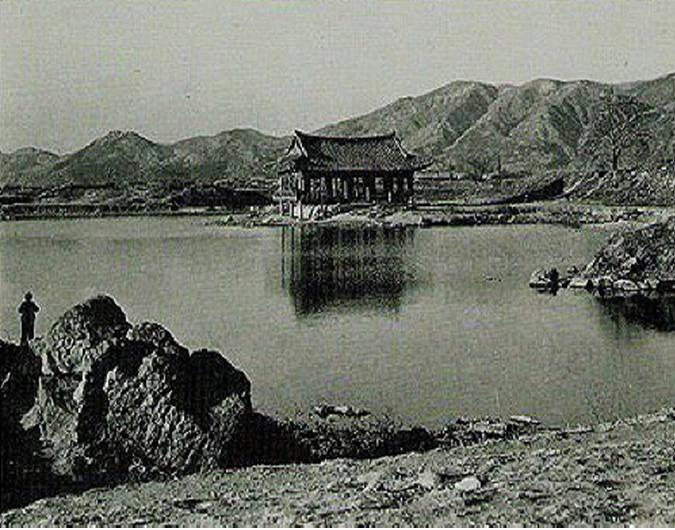
Wolji Pond was also the place where King Gyeongsun of Silla (r. 927 – 935 A.D.), the last monarch of the Silla Dynasty, hosted King Taejo of Goryeo (r. 918 A.D. – 943 A.D.) in 931 A.D. King Gyeongsun of Silla hosted King Taejo of Goryeo to ask for aid. King Taejo was the founding king of the newly established Goryeo Dynasty (918-1392) that would usurp the nearly millennium old dynasty. King Gyeongsun of Silla was placed on the throne by the Hubaekje king Gyeong Hwon after the Hubaekje army invaded and sacked Gyeongju in 927 A.D. Already extremely weakened, King Gyeongsun reigned over a tiny portion of the former Silla territory. Eventually, and after his meeting with King Taejo of Goryeo, King Gyeongsun of Silla would eventually abdicate to King Taejo in 935 A.D.
Wolji Pond is Korean Historic Site #18. It’s open from 9 a.m. to 10 p.m. The last admission to Wolji Pond is thirty minutes before closing.
For adults, admission is 3,000 won, teenagers are 2,000 won, and children are 1,000 won.
Additionally, the Gyeongju National Museum has a wonderful permanent collection dedicated to Wolji Pond in their Wolji Gallery. The national museum is free, and during the weekdays it’s open from 10 a.m. to 6 p.m. And on weekends, it’s open from 10 a.m. to 7 p.m.
Excavation of Wolji Pond
As part of the Korean government’s widespread effort to renovate the historic sites of Gyeongju, one of these projects was to rebuild and resurrect Wolji Pond to its former glory. So starting in 1974, Wolji Pond (Anapji at the time) was dredged. Then from March 1975 to December 1986, the long-term excavation of Wolji Pond resulted in a large number of artifacts from the pond. In addition to these artifacts, it was also learned that the pond had once been surrounded by stone walls. Additionally, there had been five buildings that had once been standing on the pond’s west to south sides. Waterway systems were also detected at Wolji Pond. In total, some thirty-three thousand pieces of historic artifacts were excavated from the site.
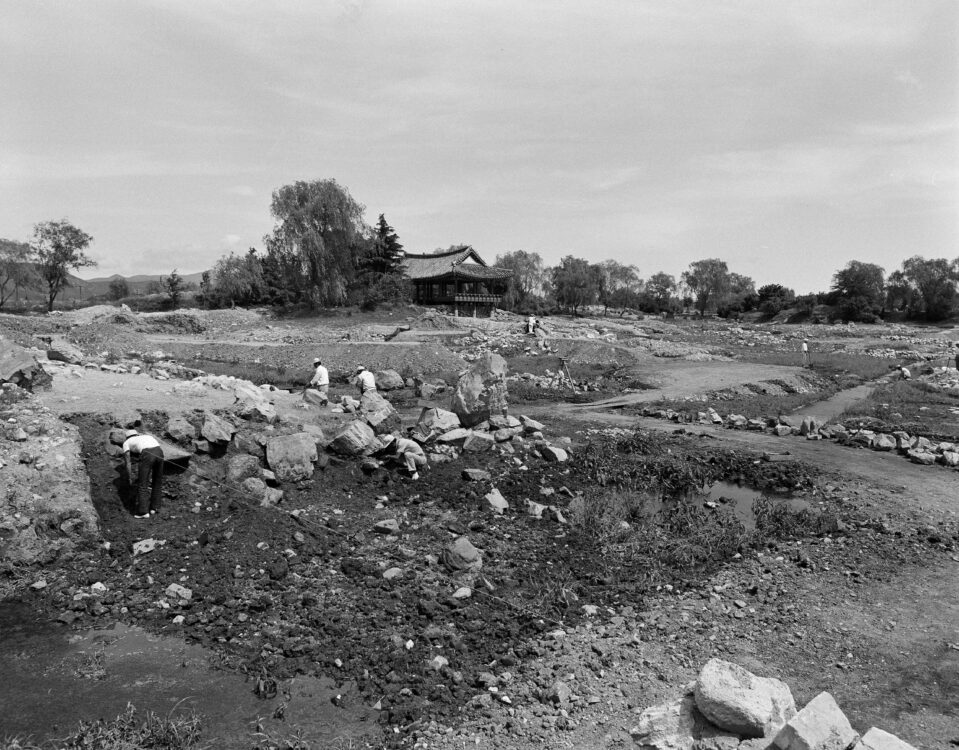
Of these thirty-three thousand artifacts, there were numerous uniquely designed roof tiles, architectural materials, pottery, gilt bronze Buddhist statues, jewelry, accessories, and everyday items that were discovered at Wolji Pond. Also important are the number of Buddhist artifacts that were discovered at Wolji Pond that help give an insight into the Buddhist art of the Silla Dynasty.
It was also discovered at this time that both Donggung Palace and Wolji Pond must have been much larger than its present size. That’s why the excavation of Wolji Pond continues to the present day. So from 2007, thirty years after the initial excavation of both Donggung Palace and Wolji Pond, the Gyeongju National Museum has been slowly continuing the expanded excavation of these sites.

In 2016, after completing the excavation of the northeastern area of the site, the findings were revealed to the public. These findings included a toilet drain built for the highest classes of Silla society. This ancient toilet had a toilet bowl and a sewage system. Also discovered were parts of what was thought to be the gate to Donggung Palace and Wolji Pond.
In 2018, the city of Gyeongju tried to reconstruct the buildings on the Wolji Pond Site; however, because Wolji Pond is classified as a UNESCO World Heritage Site, UNESCO opposed this project.
Wolji Pond Artifacts
In total, there were nearly 33,000 artifacts excavated from Wolji Pond. Of these 33,000 artifacts, over 24,000 were roof tiles. This was the largest amount of tiles discovered at a single historic site in Korea. There are a countless amount of designs to these roof tiles which provides valuable insight into the study of the Silla Dynasty.
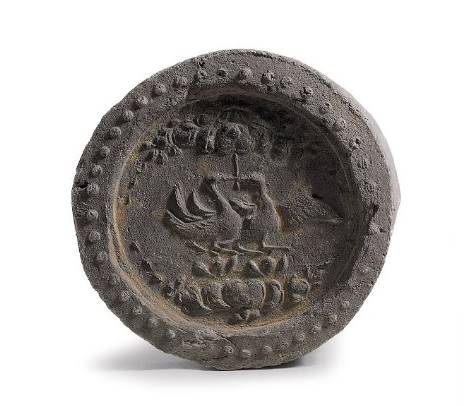
For the sake of this blog, one of these roof tile designs was that of a Kalavinka, or “Gareungbinga – 가릉빈가” in Korean. Officially this roof tile is known as Convex Roof Tile with a Kalavinka Design (Unified Silla 8th century). This is a imaginary bird that appears in Buddhist texts. It has a human head and a bird body. At Wolji Pond, it appears on a convex roof-end tile. This design was also excavated at Hwangyongsa-ji Temple Site, Bunhwangsa Temple, and Samnangsa-ji Temple Site. (Picture Courtesy of the Gyeongju National Museum).
In addition to these roof tiles, there were various Buddhist sculptures discovered at Wolji Pond. They were typically made of gilt-bronze, and they dated back to the 7th to 10 century. Specifically, they were found in the mud flats of Wolji Pond around Building Site #3.
In total, there were ten Buddha plates that were discovered during the excavation of Wolji Pond. One of these is the Buddhist Triad (Unified Silla, late 7th century). This specific plate has a spike at the bottom of it, which gives credence to the fact that it was probably attached to another object. In the centre sits Seokgamoni-bul (The Historical Buddha) that’s performing the “Turning the Wheel” mudra. This central image is joined on either side by a Bodhisattva. They both have round, plump faces. All three heads are surrounded by open halos. (Picture Courtesy of the Gyeongju National Museum).
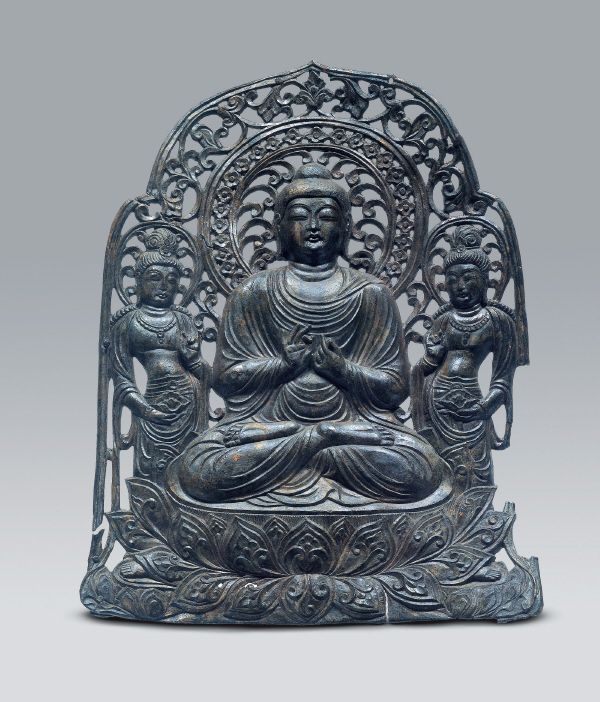
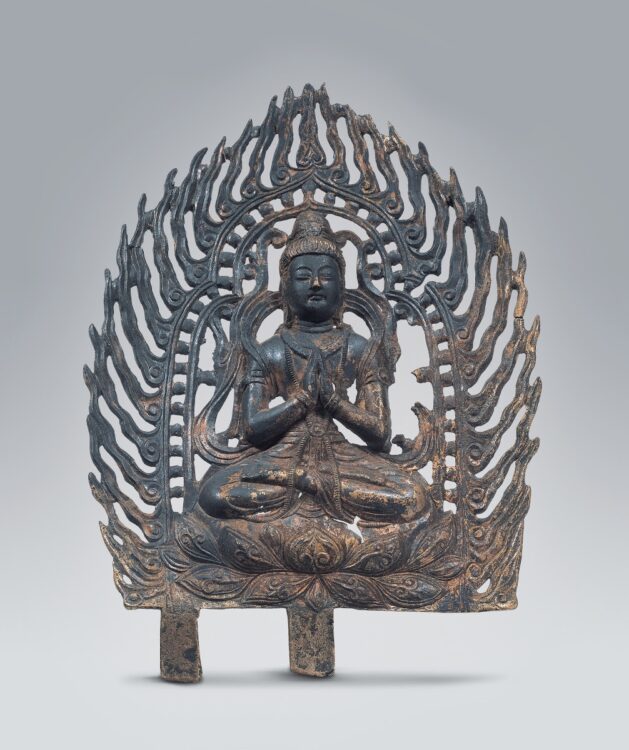
Of the ten Buddha plates excavated at Wolji Pond, only two, like the aforementioned, are represented in a triad. The other eight appear as Bodhisattvas like the Bodhisattva (Unified Silla, late 7th century). This Bodhisattva is similar in terms of style as the Buddha triads. The main difference, however, is that the Bodhisattva has its hands clasped. There are also two spikes of different lengths at the bottom of the plate. Again, this is an indication that this plate was attached to something else. (Picture Courtesy of the Gyeongju National Museum).
There were smaller sized statues excavated from Wolji Pond, too, like the fourteen centimetre tall Buddha (Unified Silla 8th century). The Buddha’s head has curly hair and a stern expression. This is considered to be the best statue retrieved from Wolji Pond.
Another larger statue of the Buddha, at thirty-five centimetres, is the other Buddha (Unified Silla 8th century). While it once had a halo, the rest of the statue is well-preserved. Also of note is the two layers of clothing that adorns the statue.
Yet another statue that was excavated from Wolji Pond is the opposite of the second Buddha (Unified Silla 8th century). Unlike the aforementioned statue, all that remains of the Aureola-shaped Adornment (Unified Silla, 8th century) is the mandorla. This delicate artifact has a boat-shaped design that’s both open and fiery. The upper portion of the mandorla features a small standing Buddha statue. The central part of the mandorla plate has a hole where the statue would have once fit. Judging by the size of the mandorla, the accompanying statue must have been about twenty centimetres tall. (Picture Courtesy of the Gyeongju National Museum).


Another piece of Buddhist artwork that was excavated at Wolji Pond are twenty-six pieces of metalwork featuring a single Buddha. This includes the Incarnate Buddha Ornaments (Unified Silla, 8th century). The face of this artwork is simply an outline without any details. Most of this style of artwork had a canopy to help shield the Buddha statue.
Similar in composition to this metalwork artwork, are those that are adorned with a Buddha triad with a seated image of the Buddha. This was a common feature in this style of design except for one piece at Wolji Pond. A great example of this Buddhist metal artistry at Wolji Pond can be seen in the Incarnate Buddha Ornaments (Unified Silla, 8th century). It’s common with this type of metalwork for the Buddha triad to be riding clouds with a canopy above them. However, there were very few of these artifacts recovered at Wolji Pond. (Picture Courtesy of the Gyeongju National Museum).
Another interesting piece of metalwork that was recovered at Wolji Pond is the Incarnate Buddha Ornaments (Unified Silla, 8th century). In these two pieces of artwork, there are Buddhas paying respect to a sari (crystallized remains). In one, there’s a three-story pagoda on the back of elephants and horses; and on the other, there is a seated Buddha putting his hands together on the back of an elephant. It’s unclear if these statues had a fitted nimbus or not. (Picture Courtesy of the Gyeongju National Museum).
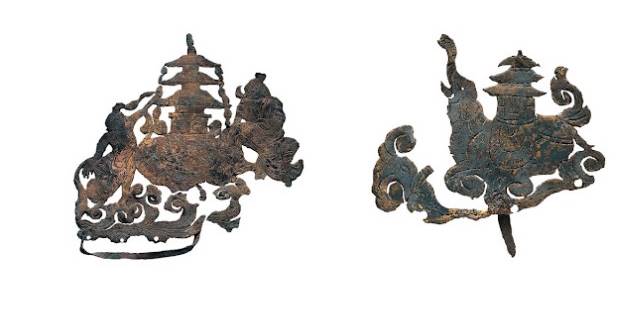
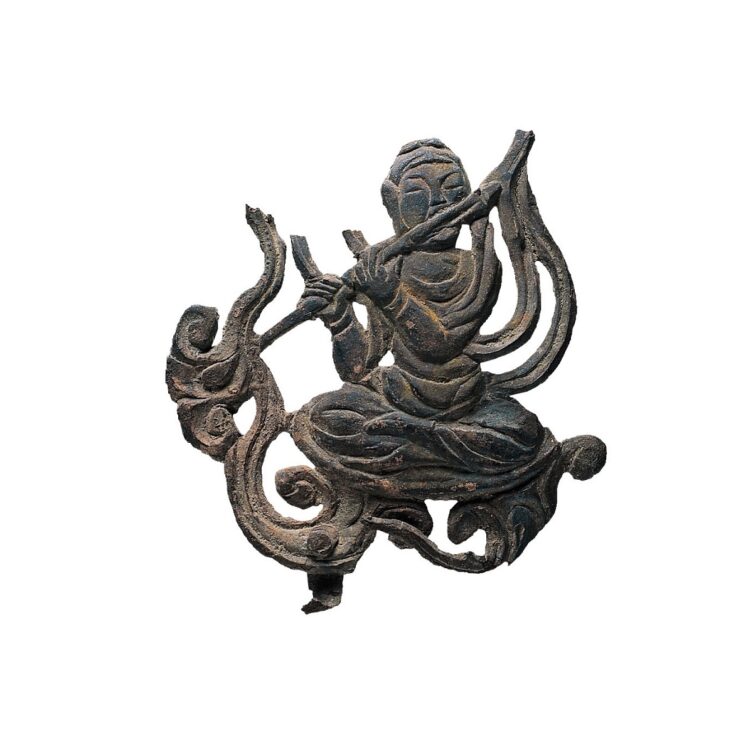
And another common object of Buddhist artistry that was excavated at Wolji Pond were eighty statues featuring Bicheon (Flying Heavenly Deities). The Bicheon statues were the most common Buddhist artwork to be discovered at Wolji Pond. A Bicheon was the most common adornment to decorate the nimbus or mandorla of a Buddha statue during the Silla Dynasty, so it makes sense as to why there were so many recovered. Among the discovered Bicheon, only four are playing a musical instrument like a large Korean flute, a six-holed bamboo flute, or a Korean mandolin. This is perhaps best represented in the 4.1 c.m. tall Incarnate Buddha Ornaments (Unified Silla, 8th century). (Picture Courtesy of the Gyeongju National Museum).
Layout of Wolji Pond
Wolji Pond measures two hundred metres from east to west. And it measures an additional one hundred and eighty metres from north to south. The edges of the southern and western side of the pond are straight; however, the edge to the north and east follow the water’s edge. Because of this design, the entire Wolji Pond can’t be seen in one glance. This was purposeful. Calculations were made when the pond was designed to make it appear as though it were the limitless sea with no end in sight. And the pond contains three islands in its midst.
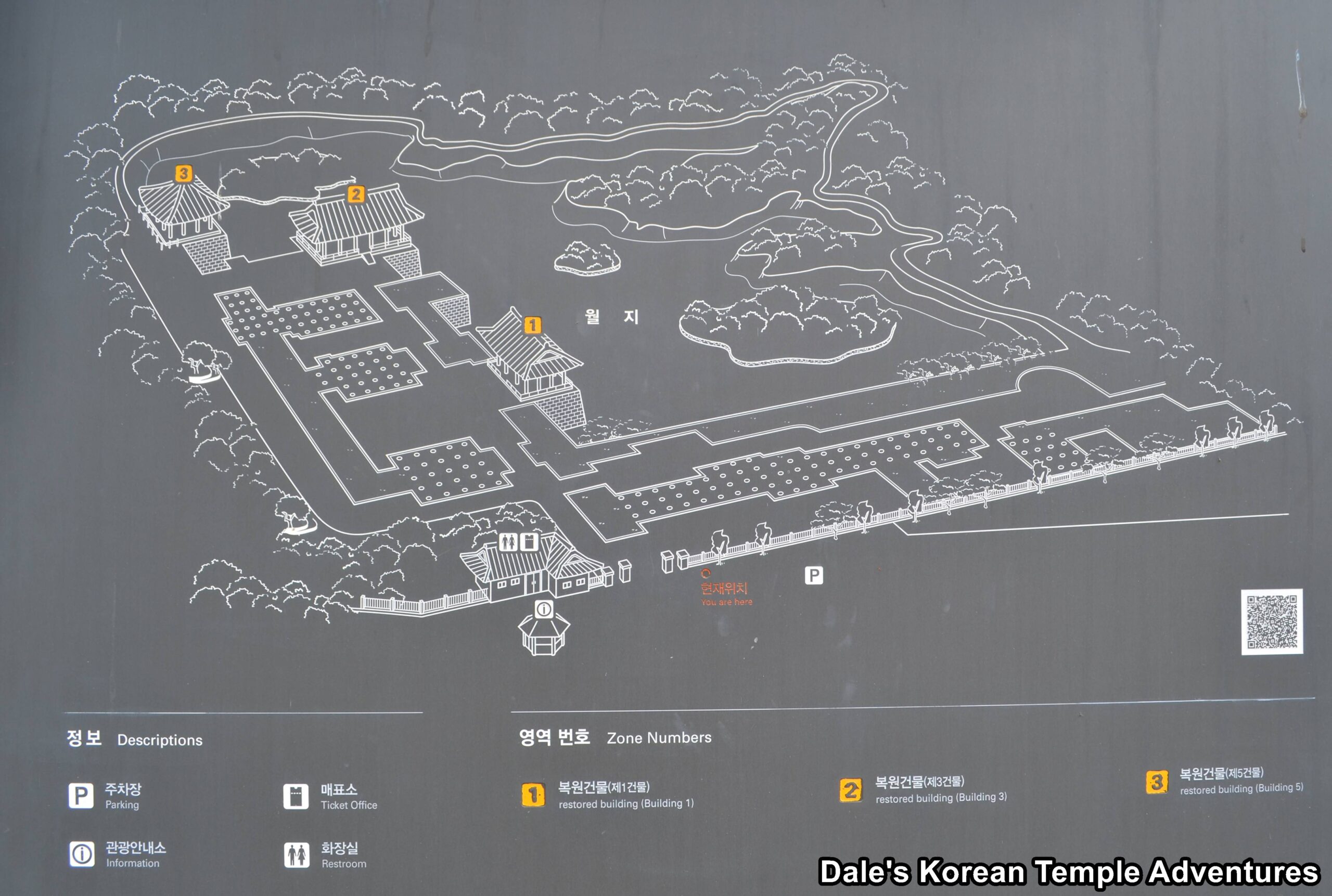
When you first enter the pond’s grounds through the entry gate, you’ll notice the foundation stones of where historic structures once stood. Both the southern and western portion of the property are filled with these elevated foundation areas. In total, there are three structures that currently take up residence at Wolji Pond. All three, however, are restored buildings. The first of the three is Restored Building #1. This building was reconstructed in 1980 during the extensive archaeological excavation conducted at Wolji Pond. The building’s design was based on historical documentation.
Next up is Restored Building #3. Like the previously reconstructed building, Restored Building #3 was rebuilt in 1980. The reason for the jump in numbers is that when the pond was being excavated in the 1970’s and 1980’s, five rock bases were found around the edge of the pond. These were assumed to be the architectural remains of historic structures. So counting from the far south, these stone bases were consecutively identified from one to five. And housed inside Restored Building #3 is a miniature scale model of what Wolji Pond looked like during the Silla Dynasty. In addition, there are replicas in glass cases lining the interior of this wooden structure of the artifacts discovered during the excavation of Wolji Pond. It’s also from this area of Wolji Pond that most of the Buddhist artifacts were discovered.
The last of these three rebuilt wooden structures that line the western edge of Wolji Pond is Restored Building #5. It’s the smallest of the three rebuilt structures, but it provides the best place to take pictures of all three structures together. Continuing past the Restored Building #5, you’ll make your way towards the north end of Wolji Pond. The hike around the north and east end of Wolji Pond follows the contours of the water’s edge. It’s also from the northern section of Wolji Pond that you can see the three islands standing in a row. On the eastern side of the pond, you’ll a beautiful forested area with rolling hills that wind their way past the outskirts of the neighbouring Wolji Pond. And finally, on the southeastern side of the pond, you’ll find a spring that feeds Wolji Pond. In total, the hike around Wolji Pond will take anywhere from thirty to forty-five minutes depending on how fast you want to walk and how many pictures you take.
How To Get There
Wolji Pond is easily accessible from the Gyeongju Intercity Bus Terminal. And as a part of a walking tour of the downtown historical sites of Gyeongju, including Daereungwon Tomb Complex, Chemseongdae Observatory, and Banwolseong Palace Site, you can visit Wolji Pond. In fact, Wolji Pond is directly across the street from Gyeongju National Museum. It’s easy to get to, and it makes for a nice half-day walking trip around downtown Gyeongju. But remember, because it’s so easy and accessible to get to, that it will also be really busy as well.
Overall Rating: 8/10
Even though Wolji Pond isn’t a temple, it does have a connection to Buddhism that’s unmistakable, so that’s why you find it here on the blog. This was made plain with the numerous Buddhist artifacts recovered at the Wolji Pond Site. And a lot of these can be enjoyed at the neighbouring Gyeongju National Museum. As for Wolji Pond, it’s a beautiful example of the Silla Kingdom’s connection to nature. So if you haven’t already been, and enjoy seeing a beautiful side to Korea, add this amazing water garden to the long list of things to enjoy in Gyeongju.
